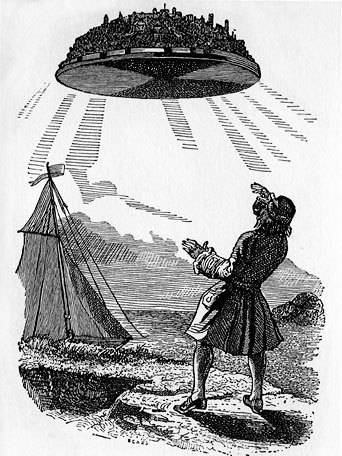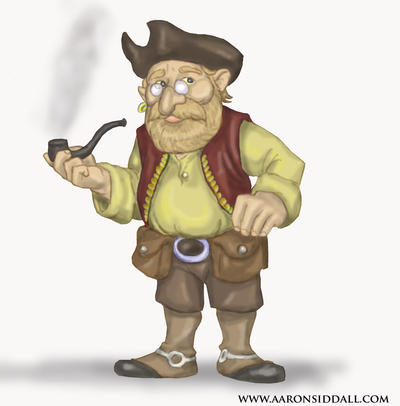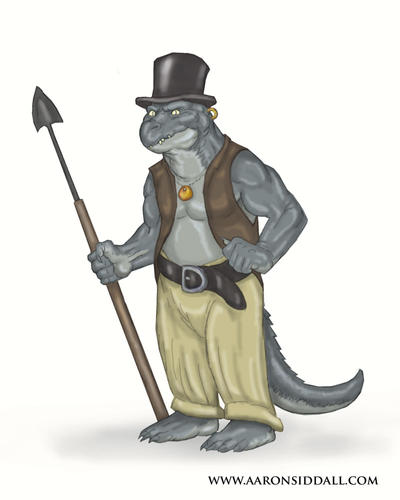CRYSTAL SPHERES (Celestial Sphere, Firmament)
The crystal sphere itself represents the outer limit of the influence of gods and other-dimensional creatures. Magic that summons or draws power from such beings or creatures does not function outside these bounds. Much of the decision as to what will and will not work is left to the individual DM, but this restriction definitely does not apply to priest spells of levels 1 and 2.
Those fantasy systems with stars in the night sky often have these stars mounted along the inside of the crystal sphere. The nature of stars varies from sphere to sphere, however. Within some spheres the stars are small portholes looking out on the phlogiston, in some they are painted lights along the interior, in some they are great cities inhabited painted lights along the interior, in others they are great bowls of fire held aloft by huge statues of forgotten gods.
Game Notes: The Crystal Shells are HUGE. Even the smallest of them is big enough to hold multiple planets. The Crystal shell of our own solar system would be the Oort Cloud, which is believed to surround the Sun at a distance up to 50,000 AU, nearly a light-year. Many spheres will be considerably larger, and some will be smaller.
THE PHLOGISTON (Luminiferous Aether, The Flow, Hyperspace)
 |
| The Flow |
Phlogiston has varying thicknesses in space and forms dense rivers between planet-sized objects (such as the spheres themselves). Voyagers moving along these paths of concentrated phlogiston discover that the greater the density of the flow, the faster a ship can move. A ship can speed up and slow down by penetrating deeper into or raising itself out of these phlogiston rivers.
The phlogiston is coterminous to both the crystal shells and wildspace but not to the Material Plane. And does not touch the Material Plane. Thus, one has to move from the phlogiston through the crystal shell to wildspace first then to the Material Plane on a spelljammer. The phlogiston is coexistent with the Ethereal Plane but does not touch the Plane of Shadow. The phlogiston doesn't have an atmosphere of any kind and is a perfect vacuum. The Phlogiston has no gravity, has no Elemental or Energy Traits, and is mildly Neutral in Alignment. While engulfed in the ‘rivers’ of the flow, time passes more quickly (2 hours = 5 hours). This allows for rapid travel times between spheres.
Any divine or arcane spell with the fire descriptor is considered maximized and empowered on this plane (see page 52 in the Blood and Treasure Players Tome). Though this can be an exciting boost, such enhanced magic can quickly get out of hand (backblast). Most knowledgeable travelers know better than to cast such spells in the flow. Similarly, other sources of flame such as a candle or fuse erupt into a 1d4 die fireball upon ignition. Any fire lit in the phlogiston will continue to burn without fuel or air until doused in water or by magical means.
Because of the nature of phlogiston, all flaming light sources are extinguished by the crew before entering the flow. Phlogiston is radiant, so no other lights are needed on the exposed decks. Below decks, or in rare (and haunted) Dark Regions of space, cold natural lights (moths or fireflies, fluorescent moss) or magical lights are used for illumination.
Because of the nature of phlogiston, all flaming light sources are extinguished by the crew before entering the flow. Phlogiston is radiant, so no other lights are needed on the exposed decks. Below decks, or in rare (and haunted) Dark Regions of space, cold natural lights (moths or fireflies, fluorescent moss) or magical lights are used for illumination.
LIFE IN THE FLOW
Strangely enough, the phlogiston is fairly teeming with life. Most of the creatures who live in the dark of Wildspace can and do live in the flow. Elementals and most outsiders are rare here due to the fact that they are cut off from the Astral Plane (and so cannot plane shift or gate back home). The exception to this are those using the Etheric plane such as the Xill and Ethereal Marauders. Undead of all types can be found in the Phlogiston.
NAVIGATING THE FLOW
The Phlogiston is limitless in size, with countless Crystal Spheres bobbing in its immense Aether Seas. There is literally no end to the number of systems that could be found in the Flow. The Phlogiston has many stable routes that have been mapped out by explorers, but the most valuable routes are often kept as secrets by merchants and other organizations looking to keep their secrets. Still, stable routed between neighboring spheres are established, and the flow has considerable traffic.
For instance, the spheres containing Eternia, Etheria, and Sagar form a stable triangle. Travel is possible in both directions between Eternia and Etheria , and between Etheria and Sagar. Eternia and Sagar are not connected by a river, however, so while a direct trip from one to the other is feasible, it is impossibly slow. From Eternia, Sagar can be reached quicker by passing through Etheria than by taking a straight-line path.
Navigation charts of the phlogiston show the major channels of flow between the spheres. Equal, two-way flow is shown by arrows in opposite directions on the map. Flow in only one direction is shown by a single arrow.





















